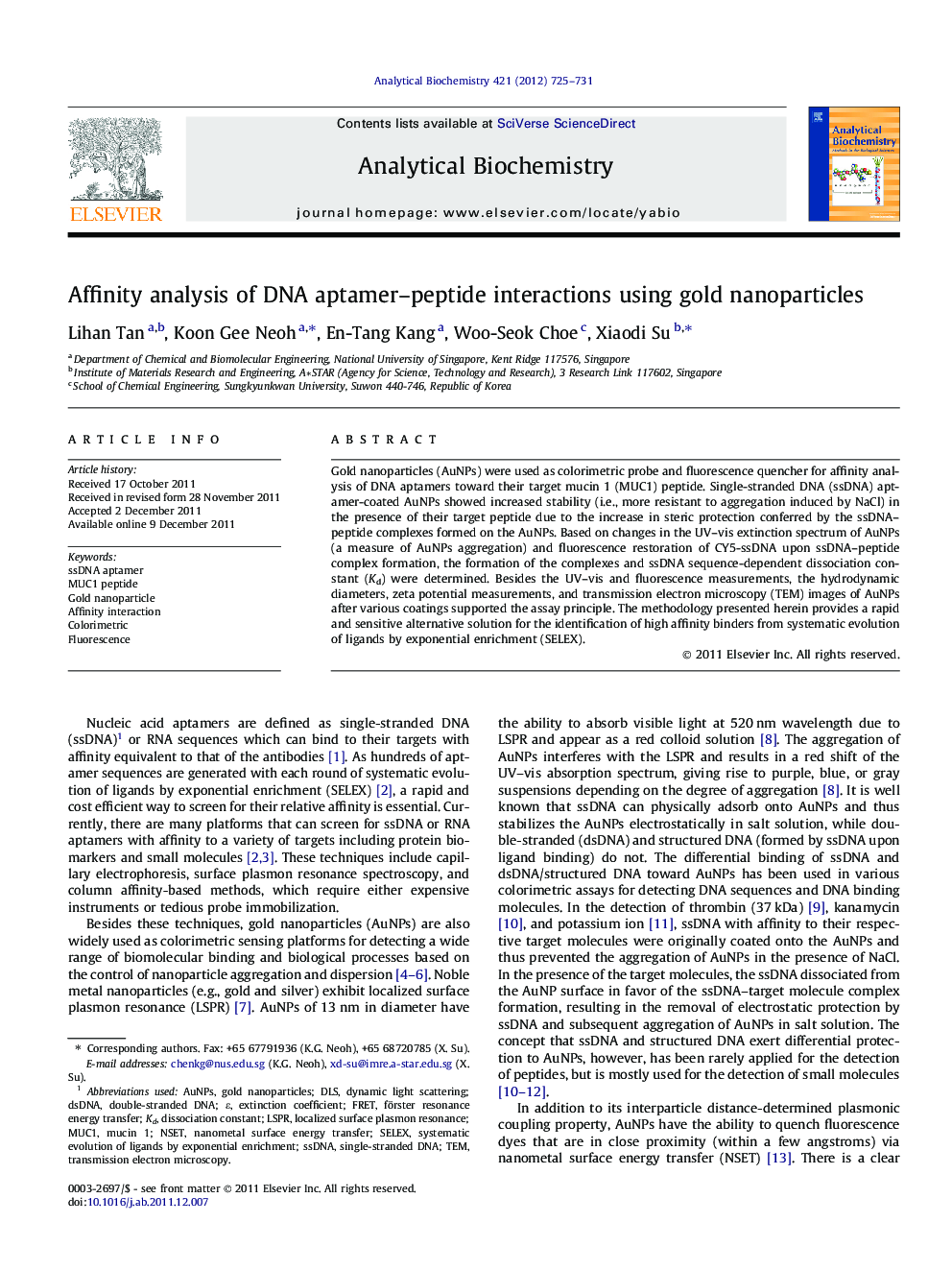| Article ID | Journal | Published Year | Pages | File Type |
|---|---|---|---|---|
| 10533733 | Analytical Biochemistry | 2012 | 7 Pages |
Abstract
Gold nanoparticles (AuNPs) were used as colorimetric probe and fluorescence quencher for affinity analysis of DNA aptamers toward their target mucin 1 (MUC1) peptide. Single-stranded DNA (ssDNA) aptamer-coated AuNPs showed increased stability (i.e., more resistant to aggregation induced by NaCl) in the presence of their target peptide due to the increase in steric protection conferred by the ssDNA-peptide complexes formed on the AuNPs. Based on changes in the UV-vis extinction spectrum of AuNPs (a measure of AuNPs aggregation) and fluorescence restoration of CY5-ssDNA upon ssDNA-peptide complex formation, the formation of the complexes and ssDNA sequence-dependent dissociation constant (Kd) were determined. Besides the UV-vis and fluorescence measurements, the hydrodynamic diameters, zeta potential measurements, and transmission electron microscopy (TEM) images of AuNPs after various coatings supported the assay principle. The methodology presented herein provides a rapid and sensitive alternative solution for the identification of high affinity binders from systematic evolution of ligands by exponential enrichment (SELEX).
Related Topics
Physical Sciences and Engineering
Chemistry
Analytical Chemistry
Authors
Lihan Tan, Koon Gee Neoh, En-Tang Kang, Woo-Seok Choe, Xiaodi Su,
